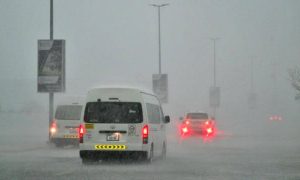The Technical Committee constituted in the Department of Drinking Water & Sanitation, Ministry of Jal Shakti in a recent meeting examined six innovation proposals and eight R&D projects, which will now be considered for inclusion in the Department’s innovation portal. The Committee’s recommendations will assist States/UTs in deciding whether or not to utilize these technologies, based on their needs and suitability.
Jal Jeevan Mission promotes innovations and R&D:
Since August 2019, the Indian government has been working with states to execute the Jal Jeevan Mission, which aims to provide tap water to every rural home in the country by 2024. Innovative technical solutions are required to achieve the mission’s aim with “speed and scale” despite the diverse challenges. Under the Jal Jeevan Mission, a Technical Committee chaired by the Principal Scientific Advisor was formed to help the implementation agencies in identifying new technologies and selecting high-end R&D applications for funding.
The Committee was formed in October 2019 and has met four times so far, despite the pandemic. Till now, it has reviewed 114 innovative technologies and 84 R&D proposals and accepted 10 innovative technologies and two R&D proposals for funding.
Undertaking IoT based monitoring of drinking water
On August 27, 2021, the Technical Committee during the meeting examined six innovation proposals and eight R&D projects. One of the R&D suggestions discussed at the conference was using IoT to monitor the amount and quality of drinking water in rural drinking water systems across the country.
Portals for recognition of innovations and funding
In the drinking water and sanitation sectors, the National Jal Jeevan Mission offers two different portals for recognizing innovations and financing R&D projects. Companies and technology service providers that want their invention to be considered by the Committee can submit it through the innovation portal.
Innovative technologies approved:
The innovative technologies that are approved lie in the areas of decentralized and packaged sewage treatment, treatment of grey and black water, drinking water disinfection using auto-chlorination, IoT-based electric vehicles for delivery of drinking water to households, water quality measurement kits using photometry and IoT based AI/ ML drivability
One of the R&D suggestions was to create a low-cost, user-friendly system that can generate excellent drinking water in an emergency, such as a flood and can be used to immediately convert polluted floodwater to potable water. The other was a demonstration of a method for remediating community well water polluted with Perchlorate, a developing and endocrine-disrupting micropollutant.
National Jal Jeevan Mission promoting startups
The National Jal Jeevan Mission consolidates all the recognized innovations and shares with State Governments for their consideration and adoption. It supports young entrepreneurs, institutions, and start-ups to upload their technologies and get funding for R&D in frontier areas to bridge the knowledge gap, with an emphasis on leveraging the usage of technology.
Emerging technologies in Water quality monitoring
Water pollution and water quality deterioration are increasing at an alarming rate due to fast urbanization and industrial growth, necessitating rapid, low-cost, and precise detection. Traditional techniques for measuring water quality, such as manual examination in a laboratory, are time-consuming, costly, and inefficient.
For effective data gathering, real-time sensor monitoring is becoming increasingly popular. Although sensing technologies like hyperspectral imaging (HSI) has been utilized to monitor algal blooms and other water quality sensors for organic compounds such as phosphorus (P), and nitrogen (N).
ICT ensuring management of water efficiently
With advancements in communication technology, smart solutions for water quality monitoring are becoming more popular. The combination of information and communications technology (ICT) and sensor technology has a lot of potential for monitoring, transmitting, and managing field water-quality data for creating efficient water-quality management.


























 WhatsApp us
WhatsApp us
Pingback: kaws rocks | crumpets vape | guava gas strain |springfield farms carts | dmt vape uk | curepen legend og | mad river melts | buy dmt vape pen |kaws rocks weed | boutiq vapes |glo extracts | kaws weed | georgia pie strain
Pingback: Devops Consulting Company